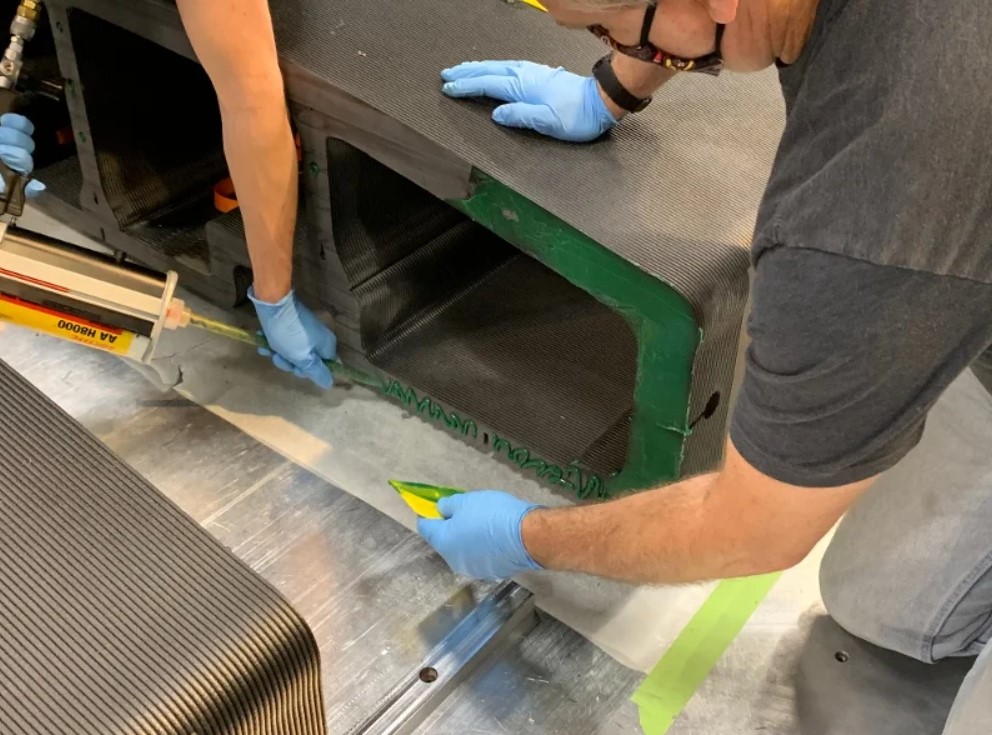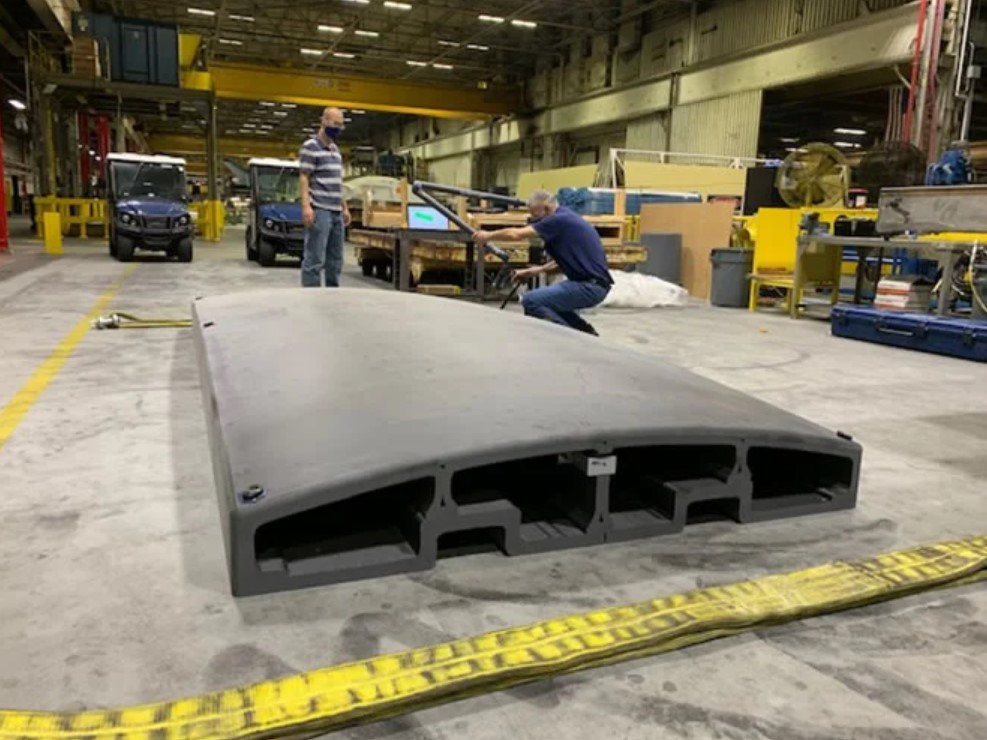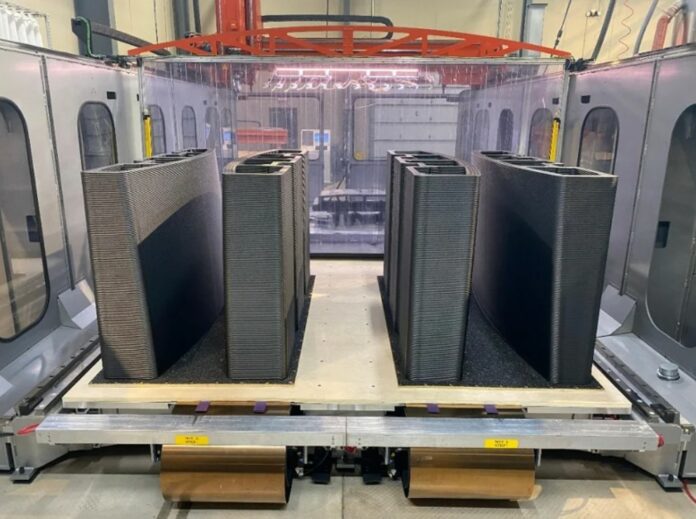With Large-format Additive Manufacturing, one usually does not expect more than a large part – printed in one go -, but with Thermwood, there is often more. The latest achievement from the company is the additive production of a stretch form tool which results from a collaboration with Spirit AeroSystems, Inc and Techmer PM.
In case you are not familiar with them, please note that Spirit AeroSystems is one of the largest manufacturers of aerostructures for commercial airplanes, defense platforms, and business/regional jets. Techmer PM on the other hand, is a materials design company that works in partnership with plastics processors, OEMs, and designers to solve some of their most pressing manufacturing challenges.
With the provider and developer of Large Scale Additive Manufacturing systems, the two companies achieve what is described as the largest stretch form tool ever 3D printed. Measuring 6 ½ foot wide by 15-foot-long (195 x 366 cm), the tool project enables several improvements at multiple levels of the manufacturing process.
One of the disruptive factors in this project was the polymer material leveraged. The partners initially bet on carbon fiber filled polycarbonate due to the material’s ability to deliver sufficient strength and withstand the significant forces used in the stretch form process. The thing is that working with this material would have led to more lubrication. Techmer PM therefore leveraged its materials’ expertise to blend a new polycarbonate formulation that contained an internal lubricant in addition to the carbon fiber, removing this way, the need for any additional lubrication.
The manufacturing process itself required the use of Thermwood’s LSAM 1020, a dual gantry print and trim system that also played a key role in a program issued to Boeing, for the development of a cure tool. Interestingly, to save time, the team at Thermwood decided to print the part in four sections. Thermwood explains that, despite the fact that the machine is based on the Vertical Layer Printing technology, printed the tool in one piece would have required the operator to wait for each printed layer to cool enough before adding the next layer – resulting therefore in 58 hours of continuous print time to produce a one-piece tool. By printing section per section, they achieved a total print time of 29 hour and 20 minutes – for 3,613 pounds (1639 kg) of material.
After this stage, the next steps were obviously machining and assembly. “The mating faces were machined flat except for slightly raised bosses which insured proper gapping for the adhesive. Adhesive is only one part of a multi part approach used to permanently and securely attach the parts to each other. These are all highly accurate, precision surfaces”, Thermwood notes.

Furthermore, due to the heavy weight of the parts and the relatively short open time for the adhesive, “there is a limited amount of time available during assembly to apply the adhesive and mate the parts securely together.” “The parts need to be pushed together while aligned, literally within a few thousandths of an inch and need to be mated absolutely even and square. This turned out to be fairly easy using the Vertical Layer Print table mechanism installed on the LSAM machine.
The parts were carefully hand fitted together. Then, one part was attached to the machine table and the other to the mechanism that moves the vertical table. The vertical table drive then moved the parts apart about 20 inches, adhesive was applied and the vertical table mechanism pushed the parts back together again, square and perfectly aligned”, a report reads.
In the end, Spirit AeroSystems then stretched 10 skin panels of 0.050” (0.13 cm) thick 2024 T3 aluminum to 5% elongation. The press controller showed that each jaw gripping the aluminum sheet had ~100 tons of load on it, so ~200 tons in total. Everything was kept under the same conditions as if running a production part and although the printed tool was considerably lighter in weight than their traditional tools, it appeared to perform in a similar manner.

The project might be a success but Thermwood said there is still a long way to go. There are additional tests to be performed and more data to be collected, but it does appear that large 3D printed composite stretch form tools can be produced using currently available material and current equipment, saving considerable time and money and opening yet another application for this exciting new technology, the company concludes.
Remember, you can post job opportunities in the AM Industry on 3D ADEPT Media free of charge or look for a job via our job board. Make sure to follow us on our social networks and subscribe to our weekly newsletter : Facebook, Twitter, LinkedIn & Instagram ! If you want to be featured in the next issue of our digital magazine or if you hear a story that needs to be heard, make sure you send it to contact@3dadept.com






